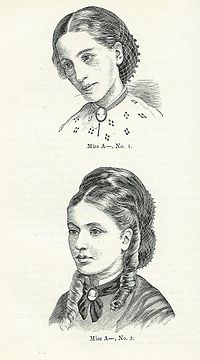
Photo from wikipedia
Introduction. The 2016 revision to the World Health Organization (WHO) classification of myeloid neoplasms and acute leukemia lists the criteria for the diagnosis of essential thrombocythemia (ET ) as 1)… Click to show full abstract
Introduction. The 2016 revision to the World Health Organization (WHO) classification of myeloid neoplasms and acute leukemia lists the criteria for the diagnosis of essential thrombocythemia (ET ) as 1) Platelet count more than 450 x 109/L 2) BM biopsy 3) Not meeting WHO criteria for BCR-ABL CML, PV, PMF, myelodysplastic syndromes, or other myeloid neoplasms, 4) Presence of JAK2, CALR, or MPL mutation . The minor criteria included Presence of a clonal marker or absence of evidence for reactive thrombocytosis .Among these criteria , the most reliable criteria for diagnosis of ET is the "presence of JAK2, CALR, or MPL mutation", these mutually exclusive "driver" mutations with respective incidences of 55%, 25%, and 3% , so approximately 17% are so called "triple-negative ET ". These 17 % cases will depend on other criterias to make a definite diagnosis as ET. Bone marrow criteria is helpful in some cases but in many cases, the differential from re-active thrombocytosis (RT) could be misleading , So a substantial portion of triple-negative patients with ET have evidence of polyclonal: the use of cytoreductive drugs in these patients is questionable . We have recently published using IGF-1R quantification by flow cytometry could be helpful in differentiating polycythemia from secondary polycythemia . Now we also found quantification of IGF-1R by flow cytometry to be helpful in the diagnosis of ET from reactive thrombocytosis. Materials and Methods: Nineteen patients with ET (treatment naive), 20 with reactive thrombocytosis (RT) (5 sickle cell disease, 5 arthritis, 5 iron deficiency, 3 metastatic Cancer, 2 with infection, one with bleeding) and 23 normal volunteer controls were studied. Flow cytometry: MNC were isolated from peripheral blood then incubated with fluorophore-conjugated primary antibody or isotype controls for 30 min at room temperature and analyzed by FACS Calibur System (BD Biosciences, San Jose, CA). PE-conjugated antibody against human IGF-1R was purchased from R&D Systems. Results: Untreated ET patients had significantly higher IGF-1R (290.8, 86.83-475.2) than RT patients (127.0, 47.75-177.2),(P =220 means that a patient belongs to ET group, with sensitivity of 47.4% and specificity equal to 94.7%. Conclusion: Quantification of IGF-1 receptor may be useful in the differential diagnosis of Essential thrombocythemia from reactive thrombocytosis, especially in those cases where no driver mutations were detected (triple negative). Disclosures Wang: Celgen: Research Funding.
Journal Title: Blood
Year Published: 2017
Link to full text (if available)
Share on Social Media: Sign Up to like & get
recommendations!